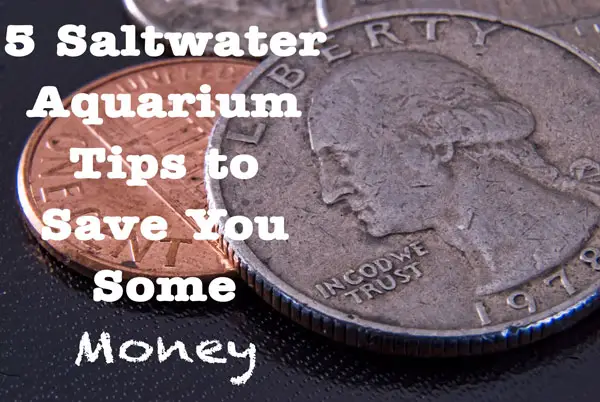5 Saltwater Aquarium Tips to Help You Save Money
The saltwater aquarium hobby is an expensive hobby–there is no hiding or avoiding that. But that doesn’t mean you have to waste money to enjoy it. Here are 5 tried-and-true saltwater aquarium tips to help you save money.
5. Switch to LED lights (or start out that way)
If you are still running metal halide, very high output (VHO), Power Compact (PC) or even T5 fluorescent aquarium lights, you are spending too much money to light your tank. LED lights arrived on the scene (years ago, at this point) and are here to stay.
Depending on which LED system you go with, switching to LED lights can literally save you hundreds of dollars a year in electricity.
A great way to see how much electricity you’re using is to get a KILL-A-WATT. This cool gizmo measures the amount of electricity being used. Simply plug the KILL-A-WATT into the wall and plug your lights, pump or heater KILL-A-WATT to see just how much electricity you use in a given day or week.
When I switched, a few years back, I replaced a metal halide/PC combo light and it shaved a huge amount of money off of my electricity bill AND I haven’t had to replace a light bulb since.
If you’re on the fence, for whatever reason, get off the fence and get an LED Aquarium Light Fixture.
A few years back, I created a calculator to help you see how quickly the savings can add up. You can access that calculator here.
4. Find a more energy efficient pump
Another way to find some savings from lowering your electricity consumption is to take a hard look at the pumps driving your water movement. The hobby has experienced a renaissance in pump technology over the last few years and there are great, energy-efficient models available.
Don’t let an older model drain money out of your pocket—upgrade to a new, energy efficient model today.
If you’re in the market for a new pump, check out the MaxSpect Gyre Aquarium Water Pump. This pump is a bit pricey, but it is the cream of the crop, fits discretely in your tank and generates a boat load of water flow.
3. Use dry sand and dry rock
Live rock and live sand are important additions to your tank—they boost the biodiversity and help you to establish your biological filter, but they are also expensive.
The truth is, all sand and all rocks in an aquarium will eventually become live rock or live sand—and the other cool factoid is that live rock and live sand create live rock and sand. So if you’re starting out your tank, or just looking to increase the amount of rock you have, save some money and make sure some of that rock is dry rock.
2. Join an aquarium club
Technically, joining a reef aquarium club will probably cost you a little bit of money, in terms of the annual dues you will owe, but you will quickly make that money back. Aquarium clubs are a great way to save money. Most aquarium clubs have relationships with local fish stores—often times club members can snag serious discounts that way.

You can also join up with other hobbyists in your area and split shipping costs, or even take advantage of group buys—these are special discounts provided to clubs for pooling their resources and ordering larger quantities of goods. Find a club in your area by visiting the MASNA website.
1. Rigorously quarantine new arrivals
Few things in this hobby can save you as much money as setting up a quarantine tank and rigorously using a quarantine process to keep parasites out of your tank. If you quarantine your livestock before adding them to your display tank, you will prevent parasites and disease and hopefully avoid the catastrophic losses that can come with it. Quarantine tanks are an investment in prevention, piece of mind and are insurance against very expensive losses.

Do you have any saltwater aquarium tips to help you save money?
If so, leave a comment below and let us know your tip.




Leave a Reply